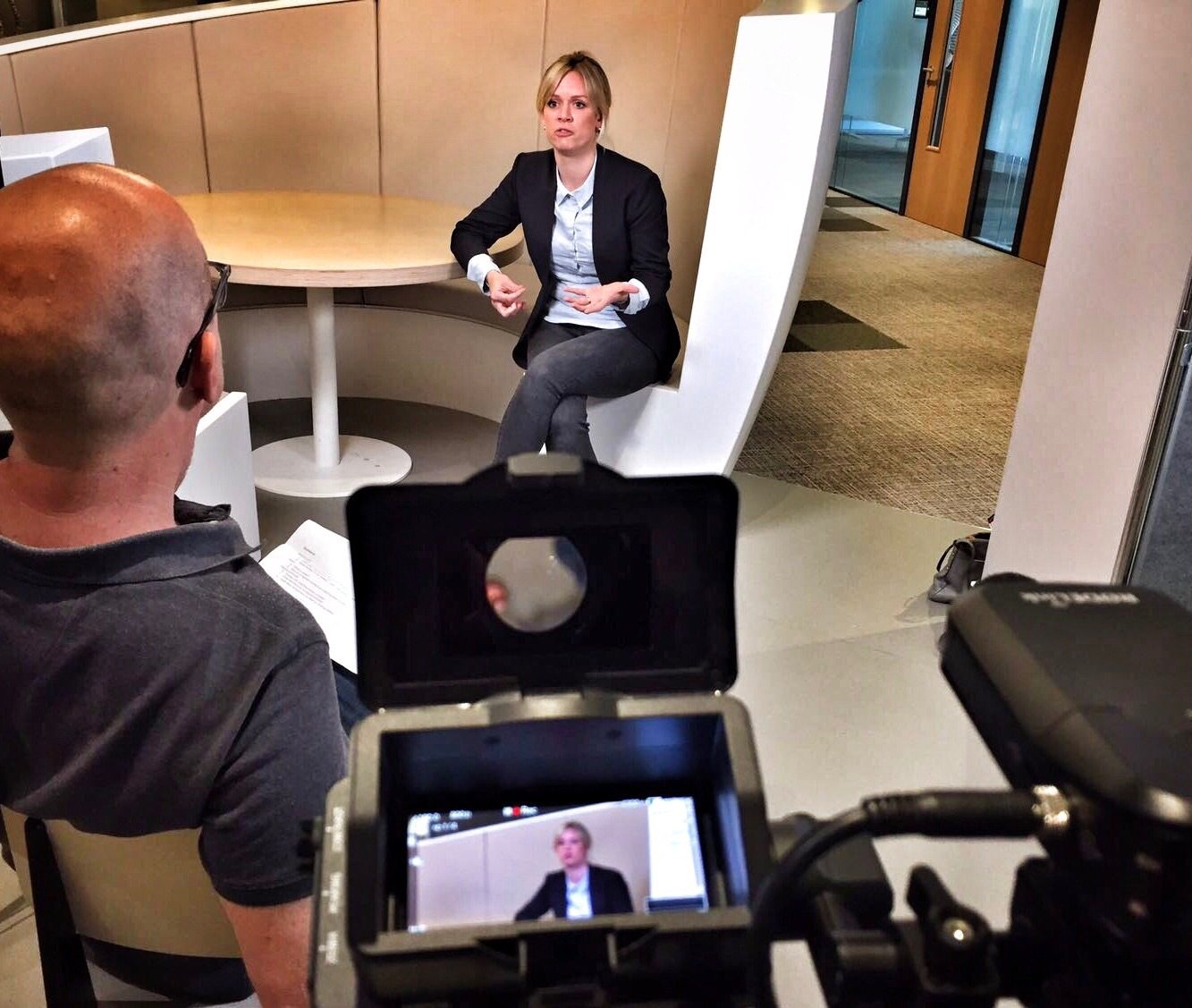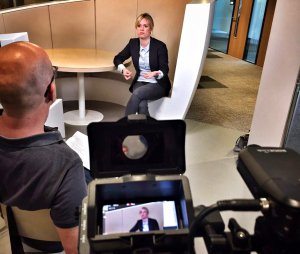
24 Jun Advice for Interviewing People for Video

Need to interview people for a video? The 5 tips below could help.
Video Marketing is a growing priority as more and more marketers are making the leap into visual content. According to a report by Hubspot, 48% of marketers said they would add YouTube to their content distribution channels in the next 12 months. Any brand that’s not regularly using video to promote who they are is missing out on a huge opportunity.
A series of filmed interviews with your employees from the most senior to the most junior across your business is a good place to start.
However, simply the presence of a camera can be intimidating to interviewees and you will need skills to ensure everything runs smoothly.
You also have to be assertive but empathetic to ensure you get the responses you want, and be able to react to different personality types; from the shy employee who is not keen on being filmed to the gruff intimidating boss who is on a tight schedule.
At Kinamo we have a wide experience of interviewing; from people with mental health issues to celebrities, professors and CEOs. This is some of what we’ve learnt:
1. Prepare, prepare, prepare
Memorise the questions in advance. Having to look down to read your questions will make for a stilted less relaxed interview. Knowing the questions will help create a more natural and conversational style.
2. Put your contributor at ease
If possible, engage with the interviewee before you begin the filmed interview. Try and get to know a little about them and make it clear why you value their contribution or special insight. Be sure to explain the reason for the video and explain the type of answers you are looking for, e.g. short sound bites or more detailed explanations.
This casual conversation prior to the interview will help the contributor to feel more relaxed when they are in front of the camera.
When you are ready to start the interview consider a soft start, i.e. quietly (out of earshot of your contributor) ask your cameraman to start recording. Then continue your ‘off -camera’ conversation with the contributor before introducing your prepared questions.
Such an approach, where there is no official start to the interview, no ‘standby’, ‘speed’ and ‘action’, etc, should mean the natural conversational style of the ‘pre-interview’ carries through to the interview itself.
3. Go with a flow
In many instances the questions won’t be heard in the final edit so the contributor will need to contextualise his or her answers for the audience.
You could ask the contributor to include the question in the answer but if done routinely for each question, this can sometimes give the interview a stiff or awkward feel.
A more professional way of ensuring you achieve answers that make sense within the context, is to follow a soft line of questioning to the point where you elicit exactly what they want in a natural unforced sounding way.
4. Remain in control
In some situations you might be faced with an individual who ‘freezes’ in front of the camera and struggles to answer coherently.
Do not allow others in the room to get involved e.g. by suggesting how the contributor should respond as this causes confusion and rarely ends well.
Put the contributor at ease. Explain that it’s very common for people to find it difficult to speak in front of a camera and make light of it.
Give them a couple of minutes to compose themselves and when you sense they are once more relaxed softly pick up the pre-prepared questions and continue with the interview. Return later to any particular question that the contributor was struggling with.
You may find yourself facing the opposite problem: an interviewee who can’t stop talking! and gives you answers that are simply too long. Don’t be afraid to ask them to condense their answers if this is what is needed, while thanking them for the interesting detail they have provided on the subject.
Don’t make the mistake of letting the interviewee speak at length in the hope that you will be able to later edit the dialogue to make sense. In my opinion, this rarely works and often makes for awkward sounding answers.
People being interviewed often speak too quickly and will need to be reminded to to slow down to a speed that feels slightly slower than natural. Not only will a slower more measured delivery help you produce a clearer interview, but it will also help the interviewee reduce the amount of ‘ums’ and ‘ers’.
5. Pay Attention
Listen with interest to the answers and be ready to dig deeper if someone says something of interest.
Consider the answers in context with the final video. Will they edit well together and provide a structure to the video? Be prepared to ask supplementary questions.
You will get better with experience but I hope this advice helps you achieve a professional looking corporate video, but do give me a shout if you need any help.
Good Luck!
Author: Phil Doherty Co-founder of Kinamo Films specialists in producing corporate films across a range of industries from technology to aerospace, education to retail, luxury to not for profits.




